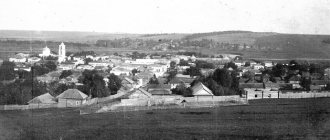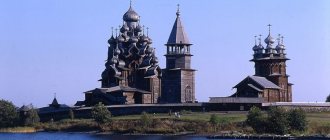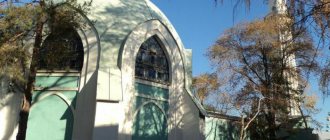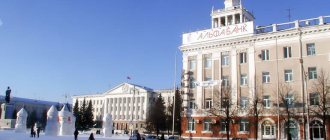Ambiguous Yaransk: a city of beautiful architecture and strange combinations
Everyone goes to Yaransk to look at the beautiful temples and merchant houses. There is a lot of both here, because this is one of the oldest cities in Vyatka: Yaransk turned 436 years old this year. In general, this is already a good reason to visit there. But there is something else: this city is ambiguous and amazing, it makes you experience a lot of different emotions at the same time. Therefore, be prepared to be delighted, perplexed, sad, laugh and even a little angry at what you see around you.
What the article says:
- How to get there
- City `s history
- Trinity Cathedral
- Assumption Cathedral
- City Garden and Annunciation Church
- Grill bar without grill and city streets
How to get there
You can get from Kirov to Yaransk along two roads - through Kotelnich or Sovetsk. We chose the second one. Firstly, this route is shorter: 220 km versus 250. And secondly, when we went to Pizhanka along the same route in June, we really liked it. This is a beautiful and winding road with constant ups, downs, turns and views almost like in the Hobbit film trilogy.
We decided to refuel the car before the trip at the Dvizheniye gas station in the village of Chirki on the Sovetsky Highway. Here we picked up coffee and fresh pastries for the road, because the journey was not long. We reached Yaransk in about 3 hours, parked the car in front of the main local attraction - the Trinity Cathedral - and went for a walk.
City `s history
It’s best to start exploring the city by visiting the local history museum. It is located in the house of the merchant Rodygin on the street. Kirova, 9. There they will tell you about the history of Yaransk and its main attractions. With this knowledge, walking around the old merchant town is much more interesting. The museum is open until 15:00 on weekends, the price of the excursion is 70 rubles.
As the guide told us, at the end of the 16th century, when the Kazan Khanate and the Mongol-Tatars were finished, fortified cities began to be built in our area to protect the northeastern borders of the Russian state. In 1584, by order of the sovereign, a governor arrived with his archers to the territory of the modern Yaran region to find a place to create one of these towns.
– The Sagittarius went out to a high ravine (steep river bank) in the area of the city garden and made a camp there. But after some time, the governor sent them to scout out what was there next, beyond the wide ravine. The archers crossed the ravine and ended up where the Trinity and Assumption Cathedral is now located. Suddenly they smelled fresh milk and freshly baked bread, which led them to the Mari settlement. This is where they decided to found the city,” said a museum employee.
Until the end of the 19th century, Yaransk was a trading city. Local merchants not only earned money, but also invested it in the construction of churches, schools, hospitals, water supply and kerosene lighting in the streets. Thanks to this, there is still something to see in Yaransk.
Trinity Cathedral
From the museum we go for a walk around the city. You can start with the most famous and largest temple in Yaransk - Trinity Cathedral. It was built in 1857 according to the design of the famous architect, master of the Russian-Byzantine architectural style Konstantin Ton, who also developed projects for the Cathedral of Christ the Savior in Moscow and the Grand Kremlin Palace.
Local residents say that the Trinity Cathedral was restored not so long ago; for a long time it was in terrible condition. And now this is the most recognizable building in Yaransk.
The first stone church on this site, by the way, was built at the end of the 17th century. It was two-story and five-domed. The architectural complex also included a tented bell tower. By the middle of the 19th century, the temple had become very dilapidated and had to be dismantled. As a result, a new church was built here, and the bell tower from the first church still stands - abandoned and lonely, next to the “destroyed” Trinity Cathedral.
On the territory of the main Yaran temple there is a hedge, in which we hid a bottle with coupons for gasoline from the Dvizhenie gas station. Here's how to find it:
1. find the gate to enter the temple territory from Kirova Street;
2. go inside, go to the edge of the hedge that grows to your right;
3. Take 10 steps along the fence and turn to face it. This is where the coupons are hidden in the bushes.
Assumption Cathedral
Literally across the road from Trinity there is another temple - the Cathedral of the Assumption of the Blessed Virgin Mary. This is a small and neat brick church, built in the classicist style. The author of the project is the provincial architect F. Roslyakov, construction dates are 1790-1798. The ensemble also includes a belfry and gates, which were built later, in the 19th century.
The Assumption Cathedral looks very nice and well-groomed; on its territory there are many flower beds with flowers that smell of honey, and the smell of incense comes from the church. Because of this, the temple has such a pleasant sweet-bitter aroma.
When you are in the outback and go to some local church, you expect to see a peeling ceiling, smudges on the walls and a floor covered with cheap paint. But the inside of the Assumption Cathedral is beautiful. It’s a pity there are no photographs: we were forbidden to take pictures in the church without the priest’s blessing, and he was not there that day. In general, everything in this temple is good, except for the plastic doors - they really spoil the view and are annoying. From the Assumption Cathedral you can walk to the bank of the Yarani, from there a beautiful view of the city and the Trinity opens, and then to the city garden.
City Garden and Annunciation Church
From the river to the garden we walked along Naberezhnaya Street. It runs along Yarani, and it’s a shame that a beautiful walking area with paving stones wasn’t built here instead.
About 10 minutes later we found ourselves at the entrance to the city garden. Here, as we were told in the museum, the history of Yaransk began: in the area of the garden, the archers who founded the city landed on the shore and set up a camp. The garden was laid out here at the beginning of the 19th century and, most likely, it was once very nice here. But now this place is not monitored at all. The way the garden looks makes you sad and offensive: it is surrounded by an old shabby fence, and inside there are half-overgrown paths, garbage and local drunks.
Directly behind the garden is the Church of the Annunciation, built in 1652. This temple, together with two more churches (the wooden Ascension and the stone Arkhangelsk) and the bell tower belonged to the Ascension Monastery. In 1764, the monastery was abolished, and later two churches and a bell tower were dismantled. After the revolution, urns, street benches were kept in the only surviving church, and for some time there was even billiards there. In 2004, the church was restored; now it looks modest but neat. True, for some reason an ugly terrace with a plastic roof was added to the temple building, an equally ugly fence made of corrugated sheets was erected around it, and a new sister building is being built nearby, which also looks cheap and unattractive.
Grill bar without grill and city streets
After exploring the old temples, you can have a snack. We decided to eat at the Bereg Yarani grill bar, which we noticed at the very beginning of our walk around the city. It is located opposite the Trinity Cathedral. When we went inside, we realized that this was not a grill bar, but an ordinary cookery. The only food here is pies and cakes, and the drinks are tea bags and instant coffee. But we were not at all upset by the meager assortment, because this Yaran grill bar is a completely unique place. Where else can we sit at a table by the window overlooking an old beautiful temple and drink a 3in1 carefully prepared by a cashier in a blue apron to “He drove away on the night train”?
After lunch we still have a little time left for an aimless walk around Yaransk. We simply walked along the central streets, peered at the beautiful mansions of Yaran merchants, plastered with tasteless advertising, wandered through empty squares, marveled at the working bus station, which had not changed at all since the times of the USSR, and were perplexed by the combination of incongruous things everywhere.
And then we set off on our way back, trying to formulate the impression of this amazing city: awkward, strange in places, but fascinating, and therefore definitely worth your attention.
To make your travel easier, we have made a map with a detailed route:
And, of course, a map where you can refuel along the way
:
Notable prisoners of the Yaransk prison
Despite direct communication, getting to provincial Yaransk for the capital's nobles was tantamount to disgrace and exile. For some, imprisonment here turned out to be quite real. In 1619, the first royal bride, Maria Khlopova, was sent here, who fell victim to palace intrigues. And earlier, in 1601, the uncle of her failed fiancé, the first Russian Tsar Mikhail Fedorovich, the noble Moscow boyar Vasily Nikitich Romanov, was already imprisoned here. He, as a representative of a family that was actively laying claim to the throne, was expelled from Moscow by Boris Godunov, who was mortally afraid of the strong boyar opposition. Vasily Romanov was kept in the city for a month and a half, according to some sources, in steel shackles, after which he was sent further to the Urals. From that time on, the hill in the central part of the city, where the exiled boyar stayed, was called Romanovskaya Mountain, and the deep place of his bathing on Yaran - Romanovskaya Pit.
It's time for severe trials
Revolutionaries were not new to Yaransk. Alexander Herzen once visited these parts, and then many “political” people were exiled here. Among them were the author of the famous song “Boldly, comrades, in step” Leonid Radin and Lenin’s associate Joseph Dubrovinsky, party nickname Comrade Innokenty. The comrades, after whom the streets in Yaransk are named, were friends and lived here in the same house; now this is a street named after another revolutionary - Stepan Khalturin.
After the October Revolution, the religious school in Yaransk was closed, and its building was occupied by the headquarters of the Red Guard in 1918. According to some reports, a trade union club was set up on the second floor, where agitators and visiting lecturers spoke. Among them was a member of the All-Russian Central Executive Committee, Lenin’s comrade-in-arms, Sergei Mitskevich. Born in the area of what is now Svoboda Street in Yaransk, he was the grandson of the famous merchant Ivan Dmitrievich Nosov.
During the Great Patriotic War, thousands of natives of the Yaran land - both believers and atheists - fought on the fronts and worked in production, bringing Victory closer with their selfless labor. Ten of them became Heroes of the Soviet Union, for example, senior sergeant Semyon Petrovich Kosterin, whose name is given to one of the streets of his native city. As the commander of an anti-tank gun, he repelled many enemy attacks, destroyed a lot of enemy military equipment and infantry, and died heroically in Poland, throwing himself with a bunch of grenades under a German tank.
The war ended, and its residents began to return to the city from the fronts.
Water "lock"
Those who come to Yaransk for the first time are often surprised: where does such a beautiful ancient castle come from in this city and who did it belong to? And their admiration grows when they learn that this colorful red brick tower is in fact just a tower, and also a water tower.
Indeed, once upon a time in our cities even such utilitarian structures resembled genuine works of architectural art. And this was only a century ago: the water tower at the intersection of Khalturin and Nekrasov streets was erected in 1912. Previously, a city water supply system was built using funds from the local government - the zemstvo - and donations from Yaran merchants. The sons of the merchant Alexander Petrovich Kalinin and the merchant Fyodor Yakovlevich Roshchin in 1911 donated large sums of money to the city that were missing for its construction.
Thanks to this, they built a water pumping station and a pressure tower, and also laid a water main, placing 7 water booths, 4 standpipes and 32 fire wells on three of the then 15 streets of the city. A power station was equipped in the water pumping building, which illuminated the Zemstvo Administration and some nearby houses in the evening. Then the city was telephoned, and the first devices were installed, including at the water pumping station, connecting it with a quick connection to the city council and the fire station.
This seemingly purely technical structure greatly beautified Yaransk, becoming its architectural landmark. Nowadays it is not used for its intended purpose; local cable television equipment is located here. However, the VKontakte social network group “Water Towers of Russia”, specially created by residents of St. Petersburg, also placed the Yaransk “castle” in its collection of the same name.
Novo-Troitskaya Bell Tower
The New Trinity bell tower of the Trinity Church dates back to 1878, but all work was completed only by 1889. It is designed in the style of the Moscow Kremlin towers and rises to 66.5 meters. It offers a magnificent view of Yaransk and the city surroundings. Before the revolution, the Yaranichs used it to find out the time: the largest of the more than two dozen bells of the Trinity Belfry, weighing over two tons, regularly chimed the hours.
The construction of the five-tier bell tower was completed much later than the temple itself, so its architecture has certain artistic differences from the canons of the Russian-Byzantine style, but at the same time it forms an integral architectural ensemble with the church building.
For a long time, the bell tower was deprived of a cross, cut down and thrown to the ground during the years of militant atheism in the country. At the base of the lost shrine, a memorial inscription discovered by restorers has been preserved: “Forged on August 25, 1878.” Thanks to a gift from philanthropist Nikolai Ivanovich Sushentsov, on November 4, 2001, the bell tower acquired a new beautiful cross. The Yaran newspaper “Fatherland” wrote about this: “Sunday November 4th is the day of veneration of the Mother of God for her intercession... the fruit of three years of effort - the cross - was delivered to us from the Republic of Mari El. Prayer services were held in churches dedicated to the Mother of God, and in Trinity - the erection of the cross on the New Trinity bell tower. Then there was its consecration, a religious procession to the place of ascension. The entire operation of hoisting the cross on the top of the bell tower took place with bated breath from the people gathered around, as the steeplejacks worked without insurance. And at noon the cross shone over our dear homeland, the city of Yaransk, thereby signaling that we must get rid of the power of evil.”
Respondents' answers about the meaning of old photographs
Olga Vladimirovna Denisova, candidate of philological sciences, art critic, Sevastopol
: “Antique photographs are unique artifacts! They are not only “witnesses” of the birth, development and flourishing of the “art of photography” in its technical and artistic manifestations, but also “guardians” of the trinity of the “face” of history: family, country, state. The study of ancient photography helps to complement or recreate the visual event series of family genealogies, landscape and architecture of small and large settlements (village, city). The backs of ancient photographs “store” inscriptions and dates that clarify the biographies of the people depicted on them - the participants and creators of our common great history. Looking at old photographic portraits, at the young and happy, at the wise, mature faces of our long-gone ancestors, we more deeply realize the true beauty of man and the value of life, our own involvement in the history of the small and large Motherland - Russia!
Akaeva Elena Valerievna, teacher of history and social studies KOGOBU Secondary School with UIOP Yaransk
: “Photographs help to understand and feel that era, people’s emotions, their experiences and feelings captured in the photo.”
Valery Viktorovich Vyatkin, candidate of historical sciences, Perm
: “Old photography is the breath of a bygone era, a visible reminder of our connection with our ancestors. You pick up an old photograph and it’s as if you hear the question: are you worthy of the great past?”
Lyudmila Aleksandrovna Tsapaeva, resident of the village of Pishtan
: “Photography helps preserve information about one’s ancestry. My son takes great care of photography and other things we inherited: my father’s wedding ring, a towel embroidered by my mother as a dowry... Grandma lived for 101 years, we learned a lot from her, we keep her stories.”
List of sources and literature
Printed
- Book of Memory [Text] T. XIV. Editorial team: V.A. Nikonova and others - Kirov: Administration of the Kirov Region, 1975. - 744 p.
- Redko A.V. Photo: Educational. allowance. [Text] / Anatoly Redko, M.: Legprombytizdat, 1995. - 304 p.
- Rusov Yu. “Recovered memory” [Text] / Yuri Rusov, - [b.m.]: Publishing solutions, 2022. - 34 p.
- Tolstoguzova V.A. “Domnushkin Monastery” [Text] / Vera Tolstoguzova // Our land. - Yaransk. - 2016. - No. 11. - P. 87–91.
Oral
- Conversation with N.M. Kolchina, who lives in the village of Dvoryan, Yaransky district, Kirov region.
- Conversations with A.N. Kostychev, living in Yaransk, Kirov region
- Conversations with T.V. Rokhlina, living in the village of Ognetovo, Yaransky district, Kirov region.
- Conversation with L.A. Tsapayeva, living in the village of Pishtan, Yaransky district, Kirov region
- Conversation with S.E. Shelepov, living in the village of Borok, Yaransky district, Kirov region.
Electronic resources
- 1 copy of a photograph from the archive of O.V. Denisova (Sevastopol), correspondence with her on VKontakte.
- 4 photocopies from the electronic archive of E.V. Dozhdikova.
- 21 electronic copies of photographs of A.M. and S.I. Urvantsev from the archive of T.V. Rokhlina.
Photo materials
- 1 photo from the archive of A.N. Kostycheva.
- 2 photocopies from the archive of N.M. Kolchina.
- 1 photo from the archive of T.V. Rokhlina.
- 1 photo from the L.A. archive Tsapayeva.











